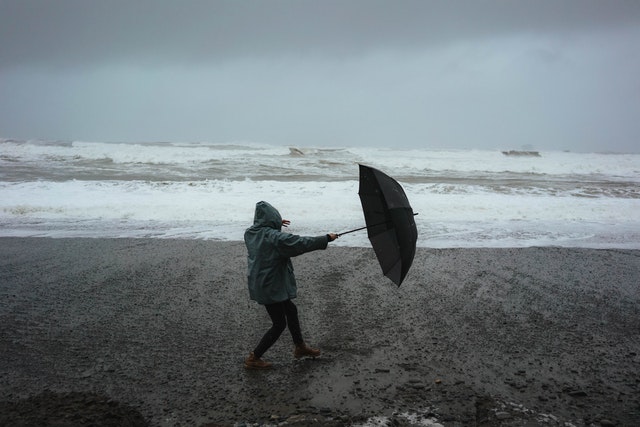Waterproofing your camping tent is one of the most important tasks that you need to complete before leaving for camping. After tough hiking up the mountain range, getting through all the hurdles along the way, reaching the campsite to enjoy the food and the amazing views of nature. You notice a bunch of clouds coming your way ready to spoil the whole experience, worriedly getting inside the tent to keep yourself dry. The clouds begin to rain, and you notice water dripping inside your tent, making it the last trip you would want to have. Don’t worry, we have got you a guide to waterproof your tent to make your camping trip an experience worth having.
What fabrics are used in waterproof tents
Most of the tents use fabrics with two layers. The first layer is usually made of materials such as nylon and polyester. It makes the tent water-resistant but not completely waterproof. Tiny droplets of water can still enter your tent. The second layer is the coating of polyurethane, which stops the water droplets from passing through. The layers of the tent’s fabric allow water vapors to pass through to make the tent breathable.
Why do you need to waterproof your camping tent?
Waterproof tents available in the market are expensive, and they still wear out in a year or two at the max, whereas the inexpensive ones do not resist water at all. It is necessary for you to waterproof your tent manually regardless of the type you own to make sure that no plot holes are left untouched when you write the story of your camping journey.

What causes camping tents to lose their waterproofness
Sun
If you camp in the sun for a few weeks, it can cause the fabric of the tent to get damaged, letting you be exposed to heavy rainfall if it occurs. You must protect your tent from the sun to prolong its life and keep its fabric doing its job.
Usage
The more you use your tent in an environment filled with dust and dirt, the sooner it will wear out and make its fabric weak against the hazards of the environment. The dust in the air causes the water to be trapped inside the fabric damaging it over time and reducing its effectiveness against rain and wind.
Damaged seams
Most of the modern tents come with fully sealed seams when you purchase them from the store; however, these seals break with time as more and more exposure to sun, dust, and dirt is given to them. The use of seam sealant can reseal the seams; the process and usage of such accessories are discussed later in this guide to help you completely fix your tent waterproofing issues.
Waterproofing your camping tent

Testing your tent
If you own a waterproof tent, then you must check its waterproofing at home before leaving for your camping trip. For this purpose, place your tent on the ground the way you would at your campsite and shower it from above. Once you have heavily showered it, get inside the tent and look for the leakage spot, if any, and keep an eye on the seals to see if they keep themselves intact.
Identifying the problem
If you have been on a trip recently and suffered from a leaking tent, you already know where the tent has been leaking from. The problem is not always what you think it is, as sometimes the leakage can happen at a place due to some other part of the tent not working properly. It is important that you test your tent completely and identify the problem to get its core before trying to fix it.
There are a few common problems that commonly occur in the camping tents
- The wrong placement of the tent.
- Leakage in the seams
- The tent’s surface lets water through while placed on a wet surface.
- Water seeping out of the tent fly
- Water seeping out of the fabric
Supplies required
You need to buy a list of supplies for proper waterproofing of your tent and making it more effective and strong against heavy winds and rainfalls. The list includes
- Rubbing alcohol to clean the seams and prevent them from dirt and dust damage.
- Wet and dry clothes for patches
- Waterproofing DWR spray is easily available at reasonable prices in the market, so grab one to strengthen your surface fabric.
- Water and soap for cleaning purposes
- A seam sealer that helps reseal the broken seals. They are easily available at any local camping store.
Sealing tent seams
If you find your tents seem to be the reason behind the leakage inside your tent, fixing them is not that hard. There are three simple steps to reseal your tent seams.
- Clean the seam with a wet cloth and apply the rubbing alcohol we previously asked you to purchase.
- Use rubbing alcohol to remove the glue that was initially keeping the seals intact.
- Use the seam sealant on the seams to seal them in their place, making sure that the glue paste you make is not too thick or thin. The ideal size of the coating would be a millimeter thick.
- Remove the excess amount of seam sealant (glue) from the seams.
- let the glue dry
- It takes about six hours for the glue to dry, so make sure that you allow it to dry completely before using it.
The whole process takes about an hour to complete, excluding the drying time. The seaming issue does not require fixing every two to three years, so once you complete the steps mentioned above, you will not have to face this issue in the next 8 to 10 years.
Waterproofing the tent’s surface
Once you are done with the sealing of the seams, now it’s time to waterproof the surface of your tent. The polyurethane present in the tent’s surface needs strengthening, and for this purpose, we use durable water repellent (DWR). DWR sprays produce a layer above the urethane which helps the material completely resist the water present on the ground.
You can use DWR sprays by following the steps mentioned below
- Set your tent up and place it anywhere in your backyard.
- Make sure that you fully set it up so that no area of the tent’s surface is left untouched.
- Soak the sponge in the water mixed with soap and wash the tent’s floor.
- Once you clean the tent’s surface, please don’t wait until it dries out. Instead, use your DWR spray on the wet surface, making sure it covers the whole surface.
- Spray should only be used on the outside surface as it would automatically absorb into the fabric to strengthen it.
After completing the whole process, which takes about 20 minutes to complete, let your tent dry for about 12 hours. DWR spray requires some time to absorb and dry, so make sure you waterproof your tent a day before leaving for a camping trip.
Waterproofing a polycotton or canvas tent
Waterproofing a canvas tent is slightly different from your regular camping tent, as they are stitched in a way that tiny holes are left between the stitching, causing the water to get through those holes into the tent. They do have a waterproof coating, but hosing down these tents before using them is necessary to tighten the weave and expand the material. The tiny holes get closed with the expansion of the material, making them completely waterproof.
Best seam sealers DWR sprays to buy
There are some brands that provide better quality DWR sprays than others. On the other hand, the quality of seam sealers in the market is not as important, as most sealants are seen doing their job quite well.
Nikwax is a brand that provides the best DWR sprays in the market. Other brands include Scotchgard, Star Brite, and kiwi.
Waterproofing the tent with a tarp
Tarp provides an easy solution to your waterproofing problem; however, it is not as appealing as the chemical method of waterproofing. If you don’t want to experiment with any chemicals on your newly bought tent, you can carry a tarp with you as a precaution. If you face harsh weather on the campsite, take your tarp out and cover your tent with it, making sure that you make a passage for the water to reach the ground from the tarp.
Conclusion
Waterproofing your tent before going camping is a process that requires some learning; however, once you have a good knowledge of how to waterproof your camping tent, the application of the procedure becomes easy and worth it considering the number of benefits it provides. Make sure that you apply all the steps mentioned above to protect yourself against the harsh weather that you might face during the adventure. Even if you have a tent that is already waterproof, strengthen it by using the supplies mentioned in this guide to ensure that you completely remove the risk of leakage.
